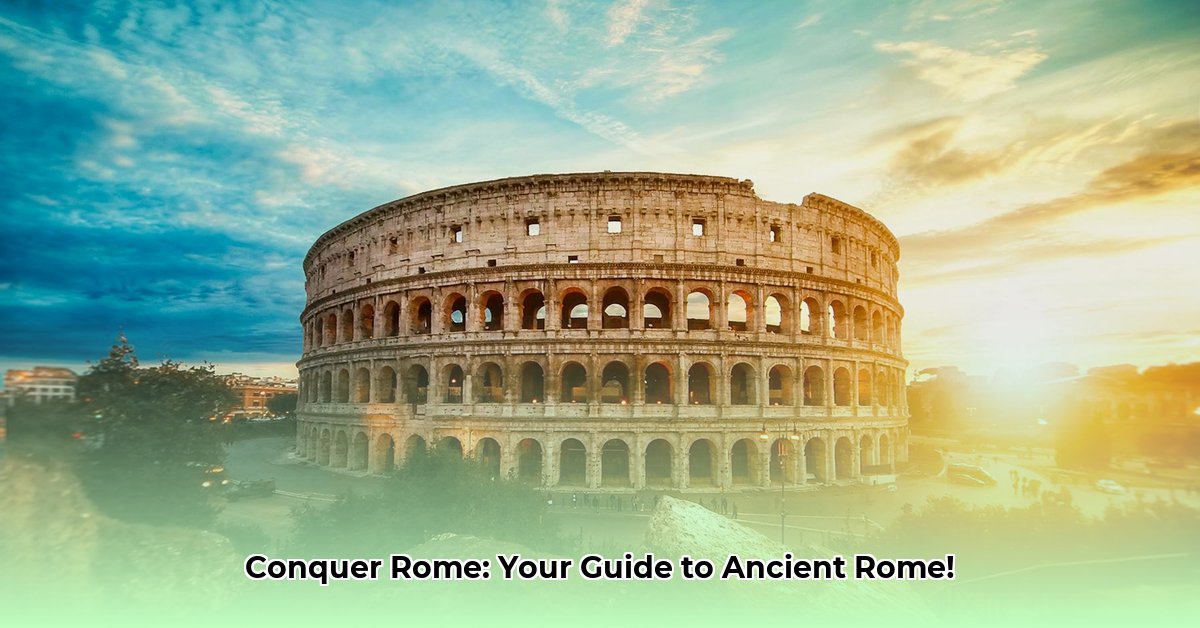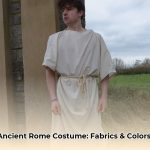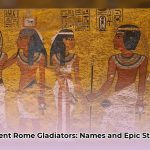History class doesn’t have to be a dusty lecture. Imagine your students, not just reading about Ancient Rome, but actively living its drama – decoding ancient texts, navigating political intrigue, or uncovering secrets hidden within the Colosseum! This is the transformative power of Ancient Rome breakout games. This comprehensive guide will equip you with the strategies and insights to design and implement captivating historical challenges, turning passive learning into an unforgettable adventure. We’ll explore why Ancient Rome is the perfect setting for these immersive activities, detail a step-by-step system for crafting your own legendary game, and provide actionable tips to ensure maximum engagement and educational impact. Get ready to transform your classroom into a vibrant historical crucible, where learning about the Roman Empire is not just fun, but a genuine quest for knowledge.
Why Ancient Rome Breakout Games Are Your Classroom’s Next Big Adventure
Transforming your classroom into a vibrant historical landscape is more accessible than you think. Ancient Rome, with its rich tapestry of gladiators, powerful emperors, engineering marvels, and sprawling empire, offers an unparalleled historical playground for educational breakout games. This civilization inherently possesses the “cool” factor, promising to captivate student attention and foster a deeper appreciation for history.
Incorporating these games into your curriculum transcends traditional teaching methods, offering dynamic advantages for both educators and learners. They are not merely supplementary activities; they are powerful tools for fostering active learning, critical thinking, and collaborative skills.
- Instant Intrigue & Motivation: The inherent drama of Roman history—from epic battles and political assassinations to mythical origins and daily life rituals—provides a built-in narrative hook. Students are naturally drawn to solving mysteries and challenges, transforming historical facts into vital clues they want to decipher. This active pursuit of knowledge significantly boosts engagement and encourages intrinsic motivation in learning.
- Versatile Curriculum Integration: Ancient Rome’s vast scope allows for incredible versatility in game design. You can tailor breakout scenarios to cover virtually any aspect of the Roman curriculum:
- Political Systems: From the Monarchy to the Republic and the Empire, puzzles can explore the evolution of Roman governance, key figures, and legal concepts.
- Daily Life & Culture: Challenges can immerse students in Roman baths, dietary habits, clothing, education, or family structures.
- Mythology & Religion: Incorporate Roman gods, goddesses, and foundational myths into puzzles, exploring their roles and significance.
- Engineering & Architecture: Design puzzles around the construction and function of aqueducts, the Colosseum, or the Pantheon, emphasizing Roman ingenuity.
- Military & Expansion: Explore Roman legions, famous campaigns, or the empire’s vast reach through map-based or strategic challenges.
- Deepened Knowledge Retention: Breakout games require students to actively apply and synthesize historical information to solve problems. This hands-on interaction and the emotional investment in the game scenario create memorable learning experiences, leading to significantly better knowledge retention than passive memorization.
- Skill Development Beyond Content: Beyond historical facts, these challenges inherently hone a range of essential 21st-century skills:
- Critical Thinking: Analyzing clues, identifying patterns, and making logical deductions.
- Problem-Solving: Devising strategies to overcome obstacles and unlock puzzles.
- Collaboration & Communication: Working effectively in teams, sharing insights, and articulating solutions.
- Resilience: Learning from mistakes and persevering through challenges.
While the benefits are substantial, it’s wise to consider the practicalities. Here’s a balanced view of integrating breakout games:
| Feature | Pros | Cons |
|---|---|---|
| Student Engagement | Fosters high levels of excitement, teamwork, and active participation. Motivates intrinsic curiosity about history. | Initial setup can be time-intensive for the educator to design and gather materials. |
| Knowledge Retention | Reinforces learning through application and memorable experiences, leading to deeper understanding and recall. | Requires careful alignment with specific learning objectives to ensure educational focus beyond just “fun.” |
| Skill Development | Enhances critical thinking, creative problem-solving, collaboration, and communication skills. | May unintentionally highlight differences in students’ prior knowledge or processing speeds, requiring careful grouping. |
| Adaptability | Highly customizable for various age groups, learning levels, and curriculum topics within Roman history. | Technology reliance for digital versions can be a barrier if internet access or devices are inconsistent. |
| Resource Efficiency | Can be designed using low-cost or free resources, making them accessible even with limited school budgets. | Requires adequate space for movement and group work, which might be challenging in smaller classrooms. |
| Differentiated Learning | Naturally supports diverse learners by allowing varied roles within teams and promoting peer-to-peer teaching and support. | Managing multiple groups simultaneously and ensuring all students contribute equally can require active facilitation. |
Crafting Your Legendary Roman Breakout Game: A Step-by-Step System
Creating an impactful Roman breakout game requires thoughtful planning, historical accuracy, and a dash of creative genius. Forget just throwing facts at students; let’s build an immersive experience that brings the Roman Empire to life.
Here’s an essential framework for designing your epic Roman adventure:
- Forge a Gripping Roman Narrative:
Every great breakout game needs a captivating story that anchors the experience. Your narrative provides the core motivation for students to solve puzzles and delve into history.- The Hook: Start with an intriguing premise. Are students part of a secret society trying to prevent the eruption of Vesuvius? Are they historians tasked with recovering missing fragments of a crucial Roman scroll before an ancient secret is lost forever? Perhaps they are aspiring gladiators who must prove their worth through a series of mental challenges to earn their freedom.
- The Goal: Clearly define the ultimate objective. What are they trying to achieve by solving the final lock? Is it to expose a senatorial conspiracy, locate a hidden artifact, or even save Rome from an impending invasion?
- The Stakes: Emphasize why their mission matters. The fate of the Republic, the discovery of a lost technology, or the preservation of cultural heritage can all be powerful motivators. A compelling scenario will naturally drive student engagement and motivate them to master the historical content.
- Design Puzzles Rooted in Roman Reality:
The authenticity of your puzzles is paramount. Ditch generic codes and infuse every challenge with genuine Roman flair. Each puzzle should not only require problem-solving but also reinforce specific learning objectives.- Roman Numerals: Integrate them into ciphers, calculations, or sequences. For example, a lock combination could be the year the Colosseum was completed (LXXII AD, or 72 AD), requiring conversion from Roman characters.
- Latin Phrases & Vocabulary: Hide clues within simplified Latin maxims or common Roman terms. Students might need to translate “Veni, vidi, vici” to find the key hidden on a map of specific Roman battle sites.
- Mythology & Deities: Create riddles or matching games based on Roman gods, their symbols, or their Greek counterparts. “I am the god of thunder, king of the gods, and my symbol is the eagle; who am I?” (Jupiter).
- Historical Figures & Events: Puzzles could involve ordering key events on a timeline, identifying famous emperors from their achievements, or matching Roman leaders to their significant contributions.
- Architecture & Engineering: Clues can be derived from the dimensions of the Colosseum, features of the Pantheon’s dome, or the structure of an aqueduct. For instance, a geometry puzzle where the solution is the height of the Flavian Amphitheatre.
- Daily Life Artifacts: Use images or descriptions of Roman pottery, clothing, tools, or food items as part of a riddle or identification task.
- Geography & Expansion: Utilize maps of the Roman Empire, roads, or major cities. A puzzle might require tracing a trade route from Rome to Britannia to reveal a letter sequence.
- Integrate Authentic Historical Resources (Simplified):
Inject a sense of realism by incorporating historical sources, even if simplified for accessibility. This direct link to primary and secondary sources makes history tangible.- Adapted Primary Source Excerpts: Use short, simplified quotes from Roman historians like Livy, Tacitus, or Plutarch as cryptic clues or background information for a puzzle. A snippet from Caesar’s Commentarii de Bello Gallico might hint at a military strategy needed to solve a tactical puzzle.
- Visual Resources: Employ images of Roman artifacts, frescoes, mosaics, sculptures, and architectural remains. A puzzle might involve identifying symbols on a mosaic to unlock a code.
- Maps & Timelines: Crucial for geographical and chronological understanding. A challenge could require students to plot the expansion of the Roman Empire or place key events in chronological order to reveal a solution.
- Choose Your Arena: Physical or Digital Components?
The format of your breakout game dictates your material needs and student interaction. Both physical and digital approaches offer unique benefits.- Physical Breakout:
- Materials: Lockboxes, directional locks, keyed padlocks, word locks, numbered locks. Physical clues like laminated cards, treasure maps, scrolls, artifacts (replicas or printouts), and secret messages hidden in books.
- Advantages: Tactile and hands-on, appealing to kinesthetic learners. Creates a tangible sense of accomplishment when a physical lock clicks open. Fosters face-to-face collaboration.
- Considerations: Requires more setup time, material organization, and reset after each play. Locks can sometimes be finicky.
- Digital Breakout:
- Platforms: Google Forms, Google Sites, Genially, or dedicated escape room software. Interactive PDFs or online puzzles.
- Advantages: Highly scalable, easy to share, and can be played remotely. Often includes built-in answer validation, reducing teacher workload during the game. Can integrate multimedia like videos, audio clips, and interactive maps.
- Considerations: Requires reliable internet access and student devices. Less tactile than physical games, which might not suit all learning styles.
- Physical Breakout:
Designing Your Roman Challenge: A Phased Approach
Once you have your core elements, follow these steps to construct a cohesive and engaging experience:
- Define Clear Learning Objectives: Before writing any puzzles, determine what specific historical content or skills you want students to master. Examples: “Students will understand the three main periods of Roman government” or “Students will identify key figures in the fall of the Republic.”
- Brainstorm the Scenario and Final Goal: With objectives in mind, develop your narrative. What’s the overarching mission? What’s the final “lock” or achievement? This provides direction for all subsequent puzzle creation.
- Develop Interconnected Puzzles: Each puzzle should lead logically to the next, building towards the final solution. Ensure there’s a clear “flow” to the game. Avoid isolated puzzles that don’t contribute to the overarching narrative or learning goal.
- Example Chain: A riddle about a Roman Emperor (e.g., Augustus) leads to a specific date. That date, converted to Roman numerals, unlocks a number lock. The item inside the lock is a map of the Roman road system, which contains coordinates for the next clue.
- Gather or Create Materials: Whether physical or digital, prepare all your clues, locks, and props. Ensure clarity and readability of all written materials.
- Test and Refine: This is crucial. Playtest your game with colleagues, family members, or a small group of students. Identify areas where clues are unclear, puzzles are too difficult/easy, or the flow is disjointed. Adjust as needed.
Maximizing Engagement and Learning
A well-designed game is only part of the equation. Effective facilitation enhances the learning experience.
- Differentiated Support: Group students strategically. Provide hints or “lifelines” for struggling groups. Offer different levels of challenge within puzzles or allow students to choose tasks that align with their strengths. For example, some groups might tackle a complex Latin decoding while others focus on a visual mosaic puzzle.
- The Facilitator’s Role: During the game, circulate, observe, and offer guidance without giving away answers. Encourage teamwork and problem-solving. Celebrate small victories and maintain a positive, energetic atmosphere.
- Post-Game Debrief: This is where the true learning solidifies. After the game, lead a discussion:
- What historical facts did you use to solve the puzzles?
- How did teamwork help you succeed?
- What challenges did you face, and how did you overcome them?
- How did this game deepen your understanding of Ancient Rome compared to reading a textbook?
- Connect the game elements directly back to your curriculum objectives.
Common Pitfalls and How to Avoid Them
Even the best intentions can lead to frustrating game experiences if common errors aren’t anticipated.
- Overly Complex or Ambigious Puzzles: Puzzles should be challenging but solvable. If clues are too vague or require external knowledge not provided, students will get stuck and disengage. Test thoroughly for clarity.
- Lack of Clear Instructions: Ensure students understand the basic rules, the objective, and how to use any tools or materials. A strong introductory brief is essential.
- Insufficient Historical Accuracy: While creative license is allowed for narrative, the historical facts embedded in puzzles must be accurate. Double-check all dates, names, and cultural details.
- Poor Time Management: Plan for a realistic timeframe. Breakout games can run longer than anticipated. Have a contingency plan (e.g., offering more hints, extending time, or providing the final solution) if groups are struggling.
- Too Many or Too Few Puzzles: Balance is key. Too many puzzles can lead to fatigue; too few can make the game feel too short and less impactful. Aim for 4-6 interconnected puzzles for a typical class period.
By following this guide, you’re not just creating a game; you’re cultivating a dynamic learning environment where the history of Ancient Rome truly comes alive. Embrace the challenge, and watch your students become enthusiastic historians, ready to explore the past with renewed curiosity and critical thinking skills.










